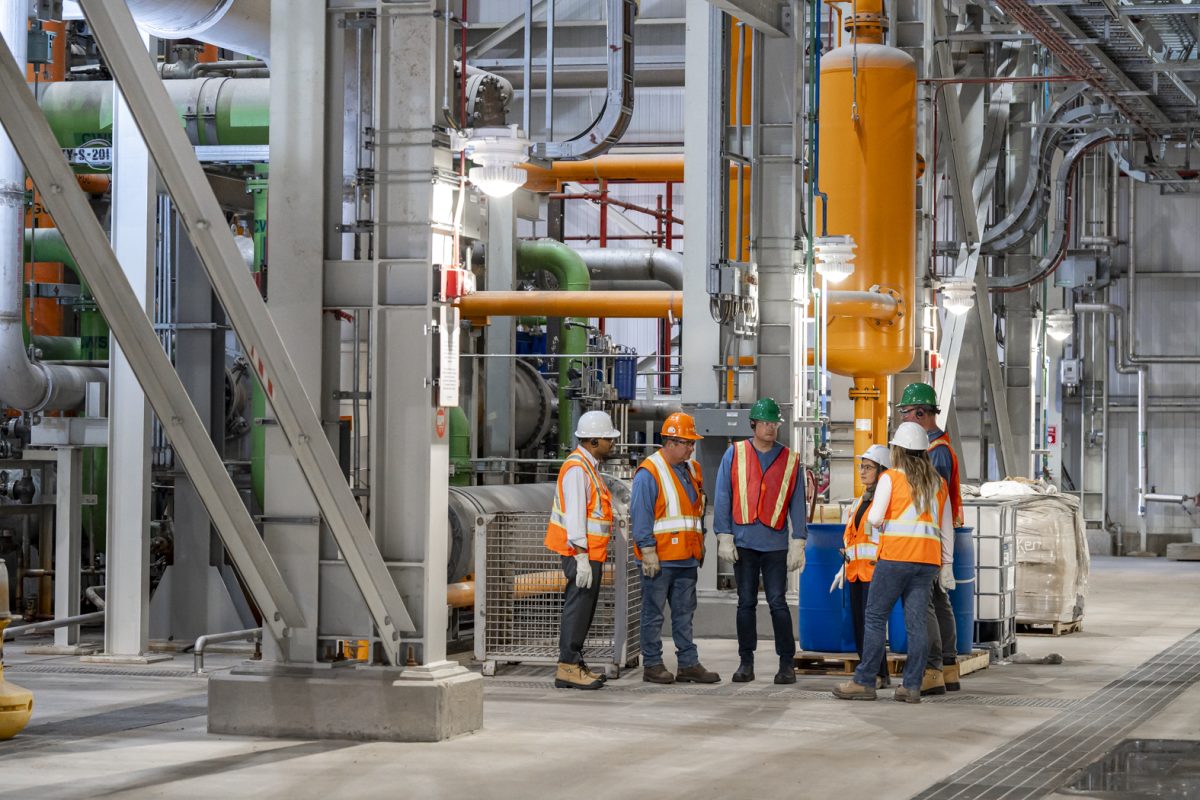Energy and resource trends we’re tracking in 2025

Canada’s energy and resource sectors are facing a plethora of uncertainties as we enter Q2 of 2025. U.S. tariffs are directly impacting markets and supply chains domestically and abroad. Global trade partnerships that have underpinned Canada’s economy for decades are being tested and redefined at an unprecedented pace. Countries around the world are reassessing their existing trade relations.
Domestically, the upcoming federal election in Canada is also poised to bring further changes, with the major political parties unveiling election platforms focused on strengthening Canada’s domestic industries, building major projects, amending trade partnerships and removing interprovincial trade barriers. The outcome of the federal election could significantly impact permitting processes, carbon policies and investment incentives, influencing existing projects and potentially creating opportunities for new or stagnant projects.
As these developments unfold, our energy and resource lawyers are tracking key themes that may define what Canada’s energy and resource sectors look like in 2025 and beyond.
The coming months and years will undoubtedly prove difficult for many Canadians and many of our clients in the energy and resource industries. At the same time, new opportunities may emerge for organizations or investors that remain committed throughout periods of uncertainty and for those willing or able to pivot efficiently and effectively.
We have the right combination of legal knowledge and practical advice to help you navigate this changing landscape. We have lawyers with extensive experience in all types of energy and resource (including critical mineral) projects including projects involving indigenous businesses and communities, difficult regulatory issues, emissions reduction and credits, and innovative technologies. We can help you get your energy project and business moving forward.
Reigniting major projects and investment momentum
It is on a more optimistic note that we turn to the first theme we are tracking. The shifting trade and geopolitical landscape and changes resulting from the federal election could lead to the reconsideration or revival of major energy and infrastructure projects across Canada.
Specifically, it is clear that, regardless of the result of the Canadian federal election, the next Canadian party to form government will likely focus on supporting investments in major projects within Canada in a manner that has not been seen for some time.
Canadian federal parties are making various promises to reduce regulatory barriers in order to ignite – or reignite – major projects. On the campaign trail, we have heard Canada’s federal party leaders make promises of reduced or streamlined permitting processes, including establishing provincial approvals as sufficient to meet federal requirements. We have also heard promises to repeal or amend environmental assessment legislation altogether. Regardless on what party forms government, we anticipate that there will be changes to existing regulatory regimes in a manner intended to push major project developments.
Along with the reduction of regulatory barriers, we are also anticipating that new funding initiatives, grants and investment tax credits may emerge to encourage major industrial and infrastructure developments. For project owners with previously shelved assets or projects, this shifting environment could present opportunities to revisit prior projects or investments. Some may choose to restart development efforts, while others may explore asset sales, allowing new entrants to capitalize on evolving regulatory conditions and economic incentives.
Could we see the development of a port in Churchill, Manitoba? New critical mineral mines in Alberta and Saskatchewan? The development of new transmission lines or pipelines through British Columbia? The enthusiasm for these projects remains very high, but only time will tell what campaign promises become reality and how these might actually impact major projects.
Our team is actively tracking federal campaign announcements and will continue to track developments after the election in order to provide strategic guidance on how businesses can start to navigate and capitalize on what may become a rapidly evolving regulatory and investment landscape.
Canadian business should survey their existing assets and projects now, including those previously shelved or deemed unfeasible, to be able to act quickly if the regulatory and investment landscape quickly evolves.
Emissions reduction legislation
Emission reduction policies and laws, more colloquially referred to as carbon policies and laws, remain a major focus in Canada. In general, carbon is regulated at two levels: a consumer carbon tax and an industrial carbon pricing system.
The consumer carbon tax (currently paused) imposes a direct fee on fuels consumed by individuals and small businesses. Revenue from this tax is typically returned to Canadians through rebates.
On the other hand, the industrial carbon pricing system, through the Output-Based Pricing System (OBPS), sets emissions intensity standards for large emitters. Facilities exceeding their emissions limits must compensate for excess emissions, while those operating below the limit can earn and trade credits, incentivizing lower emissions. The industrial carbon pricing system also includes protocols allowing parties to produce offsets that can be used by large emitters for their compliance.
Emissions are regulated at both the federal and provincial level. Currently, federal legislation acts as a backstop for provincial laws. The federal legislation applies in provinces without emissions reduction legislation or where such provincial legislation is not deemed sufficient based on the federal requirements.
The Conservative Party of Canada has long advocated for eliminating carbon taxes and emissions reduction laws, initially focusing on repealing the consumer carbon tax. As the election cycle unfolds, the Conservative Party of Canada has confirmed that, if it forms government, it will also seek to repeal the industrial carbon tax.
Meanwhile, the Liberal Party of Canada, which currently holds government, has already taken steps to eliminate the consumer carbon tax while reiterating the importance of the OBPS regime.
For Canadian energy and resource companies, these policy announcements and potential shifts in domestic emissions reduction laws are significant. The oil and gas sector has invested significantly in carbon capture and storage (CCS) as a way to meet emissions reduction targets.
Large mining operations have already invested, or are considering investments, focused on reducing the emissions intensity of their operations. Large renewable energy projects have relied on carbon offsets sold to large emitters as a key revenue stream. Other newer energy producers, such as waste-to-energy projects, depend on stable emissions pricing to attract investors and proceed with developing proposed projects. Significant changes or pivots in emissions reduction laws domestically will need to be carefully considered by all energy and resource companies, and could result in significant changes on the viability of different energy and resource projects.
International discussion
To further complicate the landscape, there is also a broader international discussion that is often overlooked as discussions intensify on changes to Canada’s domestic emissions reduction laws. For example, the European Union (EU) has introduced a carbon border adjustment mechanism (CBAM) intended to impose tariffs on imports based on their carbon intensity. This policy aims to prevent carbon leakage and ensure that imported goods are subject to similar carbon costs as domestically produced products. Certain products entering the EU will have a competitive advantage if they were produced using less emissions than other like products. More broadly, there are still other market factors to consider, including emissions targets commitments made by companies that are increasingly being scrutinized by certain shareholders and institutional investors.
Changes to Canada’s domestic discussion on emissions reduction laws will not eliminate considerations for Canadian businesses on the emissions intensity of their projects or operations. Specifically, as Canada explores opening or further developing new trade partnerships, especially in European markets, Canadian businesses will still need to consider the emissions requirements for the market they are entering or already exporting into.
Our energy and resource team is actively tracking changes to emissions reduction policies and laws domestically and internationally and can assist in advising on the potential impact on investments and operations for Canadian businesses.
Provincial trade barriers, east-west infrastructure and domestic energy corridors
Geopolitical pressures are prompting Canada to rethink its domestic energy and resource infrastructure.
Historically, Canadian provinces have traded with adjacent U.S. states more than within Canada. This situation is highlighted if you view the location of major pipelines and energy transmission lines across Canada linking Canadian provinces with their U.S. state neighbours. The trade disputes with the U.S. has resulted in a broad sentiment across Canada on reassessing its interconnection and reliance on the U.S., including the development of more business and better co-operation between Canadian provinces and territories.
On the campaign trail, all political parties in Canada have discussed plans to reduce trade barriers between provinces and territories. This could include streamlining permitting processes and making it easier for workers qualified in one Canadian province to be qualified across Canada. Parties have also suggested plans for the development or further advancement of domestic energy corridors across Canada to ensure Canadian energy and resources can be transported more efficiently to buyers domestically and internationally.
The reduction of provincial or territorial trade barriers and better co-operation between provinces and territories could have profound implications for energy and resource projects. A key focus is on improving electrical transmission and pipeline infrastructure between or through provinces, which would have the potential of unlocking new export or import opportunities for Canadian businesses. A more integrated national electrical grid could change the nature of Canada’s existing domestic energy production.
While the discussion on large interprovincial infrastructure projects is promising news for many Canadian business, these projects and the development of domestic energy corridors will involve significant legal, regulatory and commercial complexities.
Moreover, while enthusiasm is high in some parts of Canada, there are regional social and political factors that will continue to be considered as a new federal government looks to take steps to encourage better alignment and cooperation across Canada.
Our energy and resource team will continue to track announcements and developments that could result in the reduction of interprovincial trade barriers and create new investment or export opportunities for Canadian energy and resource businesses.
Critical minerals and supply chain developments
The discussion around critical minerals—essential for energy and infrastructure projects, electric vehicles, digital infrastructure and military applications—continues to gain momentum as all nations prioritize securing reliable supply chains.
The U.S.’s increased attention on Greenland is considered by many to be largely driven by its vast critical mineral resources. At the same time, as the U.S. escalates its trade dispute with China, the Chinese government has taken steps to leverage its international stronghold on critical mineral resources.
Canada possesses vast untapped critical mineral resources. Enthusiasm for the development of Canada’s critical minerals has percolated for some time, but seems to be escalating under the current geopolitical landscape as countries around the world look to shore up reliable critical mineral sources and supply chains. Canada has the potential to position itself as a key supplier of critical minerals internationally for existing and emerging trading partners.
In a time of heightened interest on critical minerals, new opportunities may arise for resource extraction projects. For years, Canada has wadded in its development of new major mining operations. This could change rapidly as more focus is placed on encouraging the development of Canadian critical minerals and other resources. Projects previously deemed unviable may need to be reconsidered as government programs and incentives are unveiled, commitments are made for new infrastructure investments, and supply chains and trade relationships continue to evolve.
Our energy and resource team is closely monitoring policy developments, regulatory shifts and investment incentives that could shape the future of critical minerals in Canada. Whether you are exploring new investments, reassessing stalled projects or adapting to regulatory shifts, we are here to help you position your company for success in this evolving market. Contact us to learn how we can help.
Note: This article is of a general nature only and is not exhaustive of all possible legal rights or remedies. In addition, laws may change over time and should be interpreted only in the context of particular circumstances such that these materials are not intended to be relied upon or taken as legal advice or opinion. Readers should consult a legal professional for specific advice in any particular situation.







